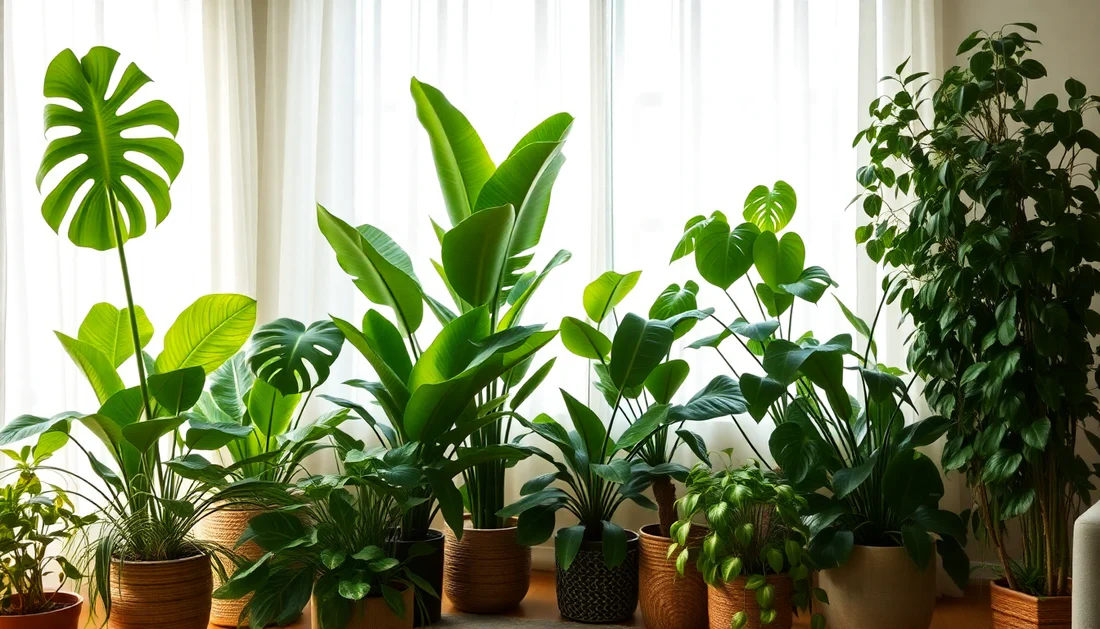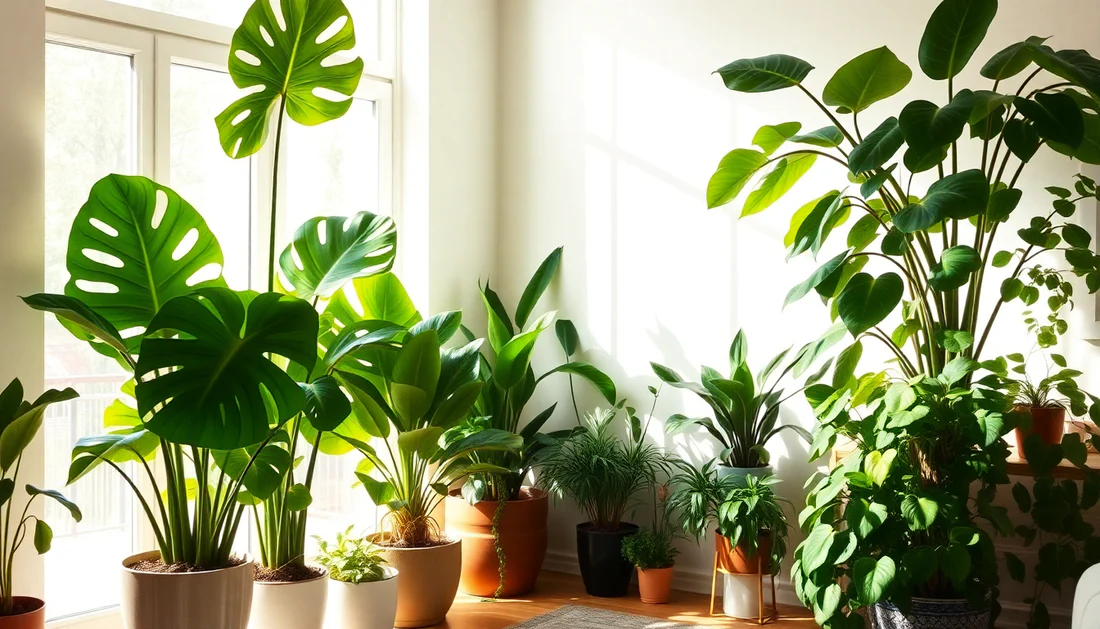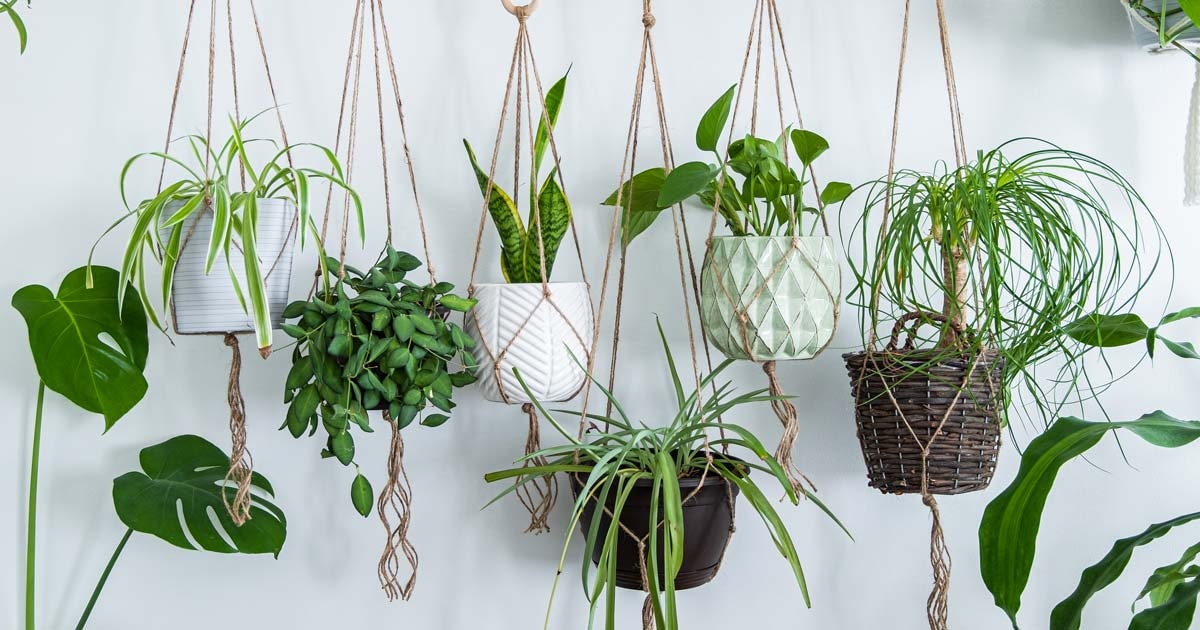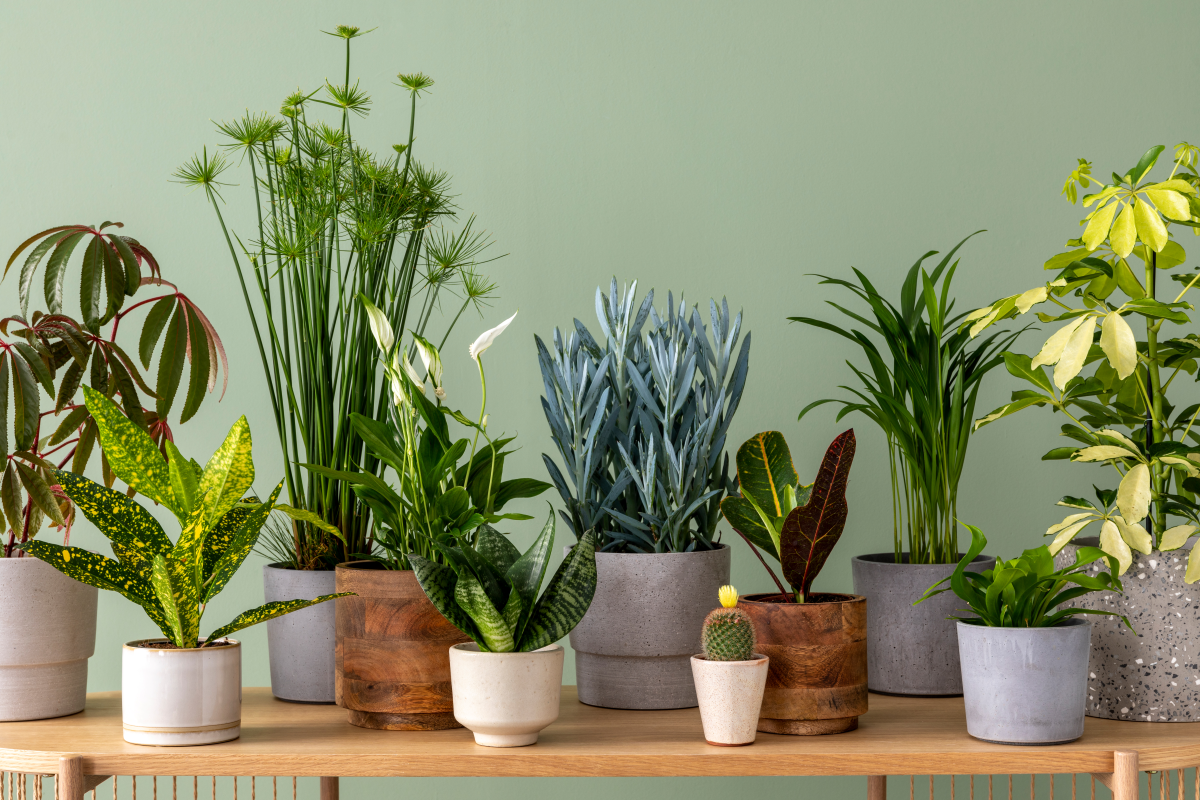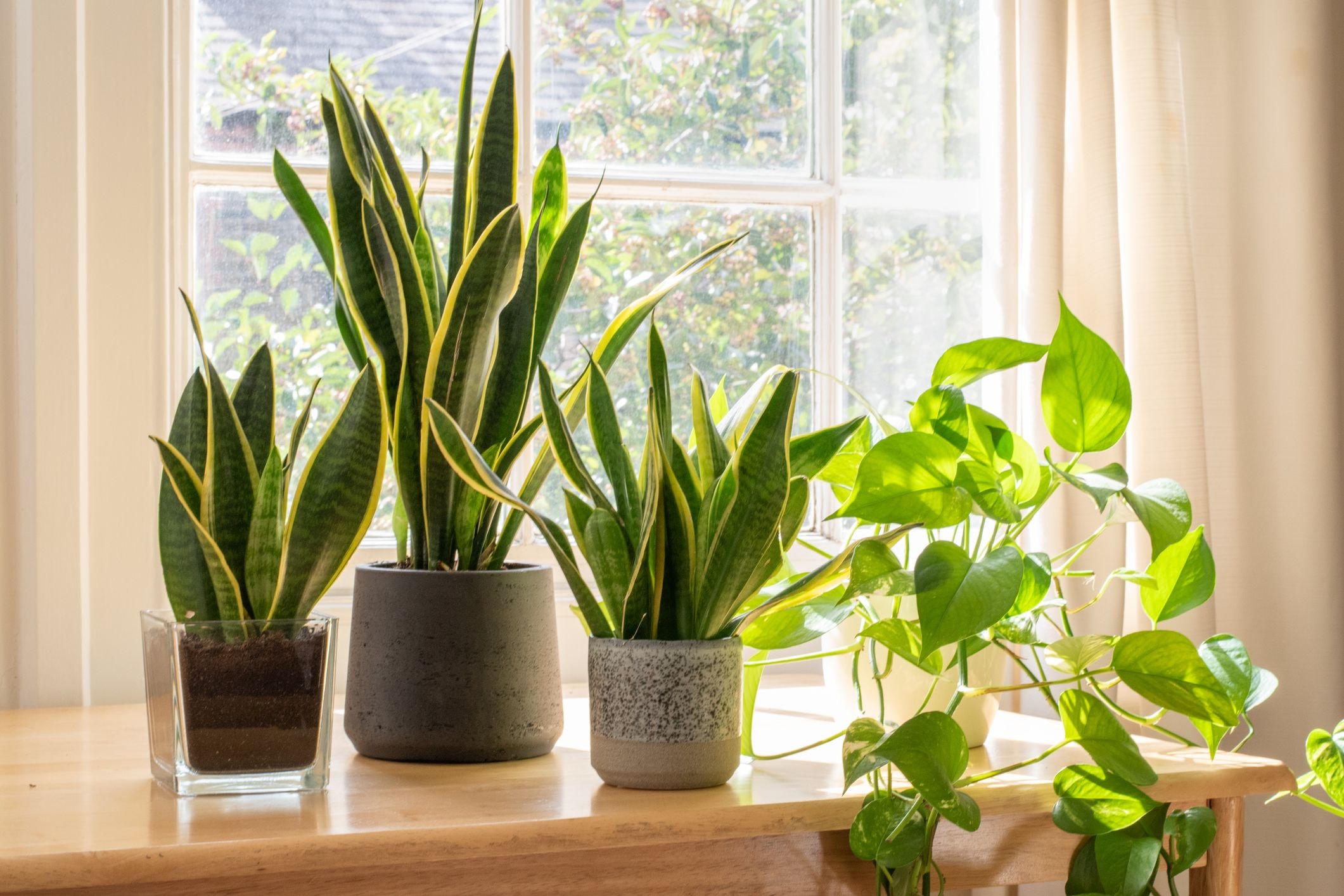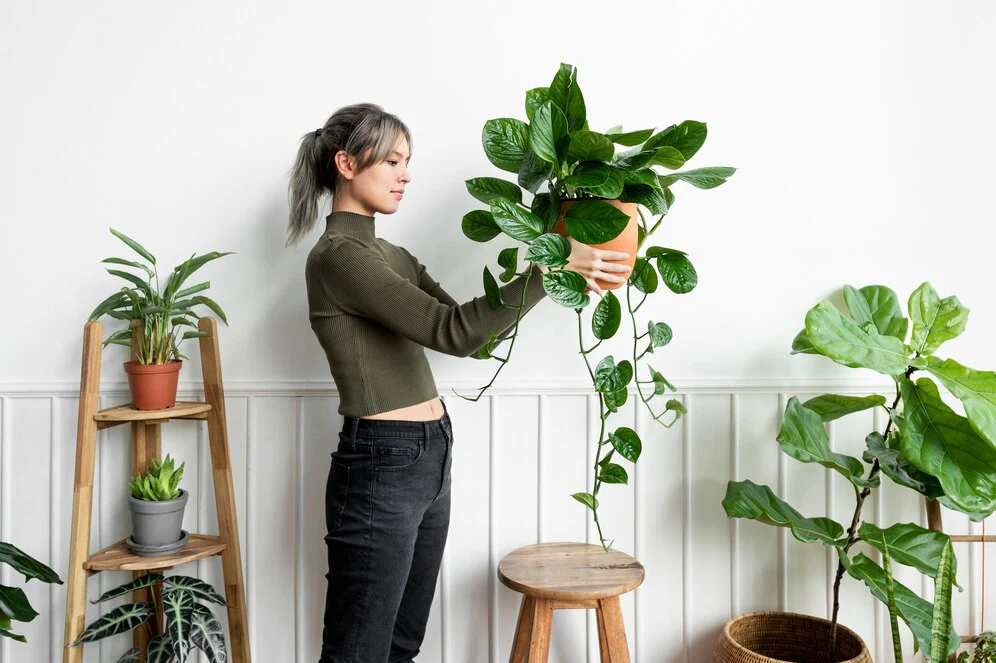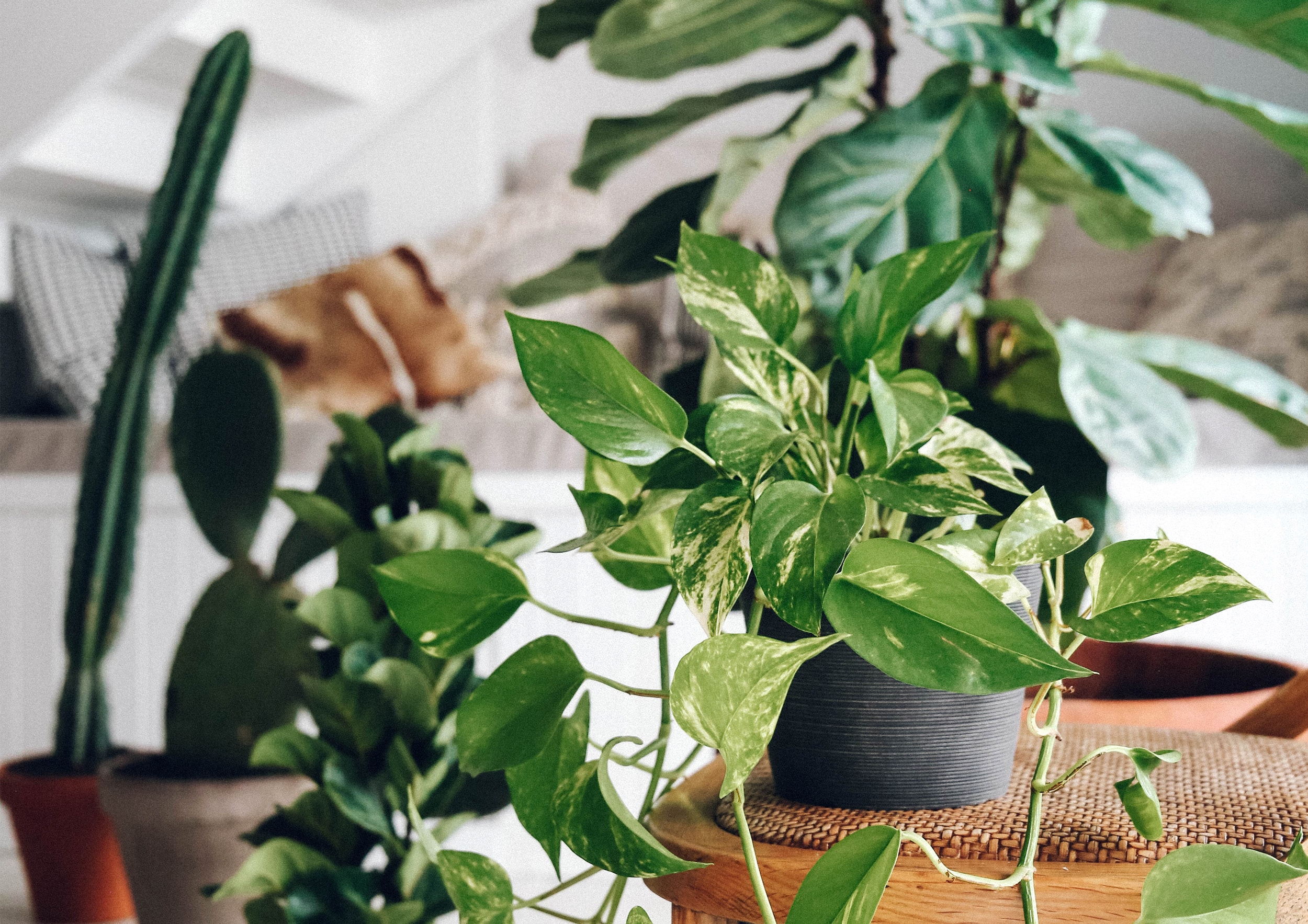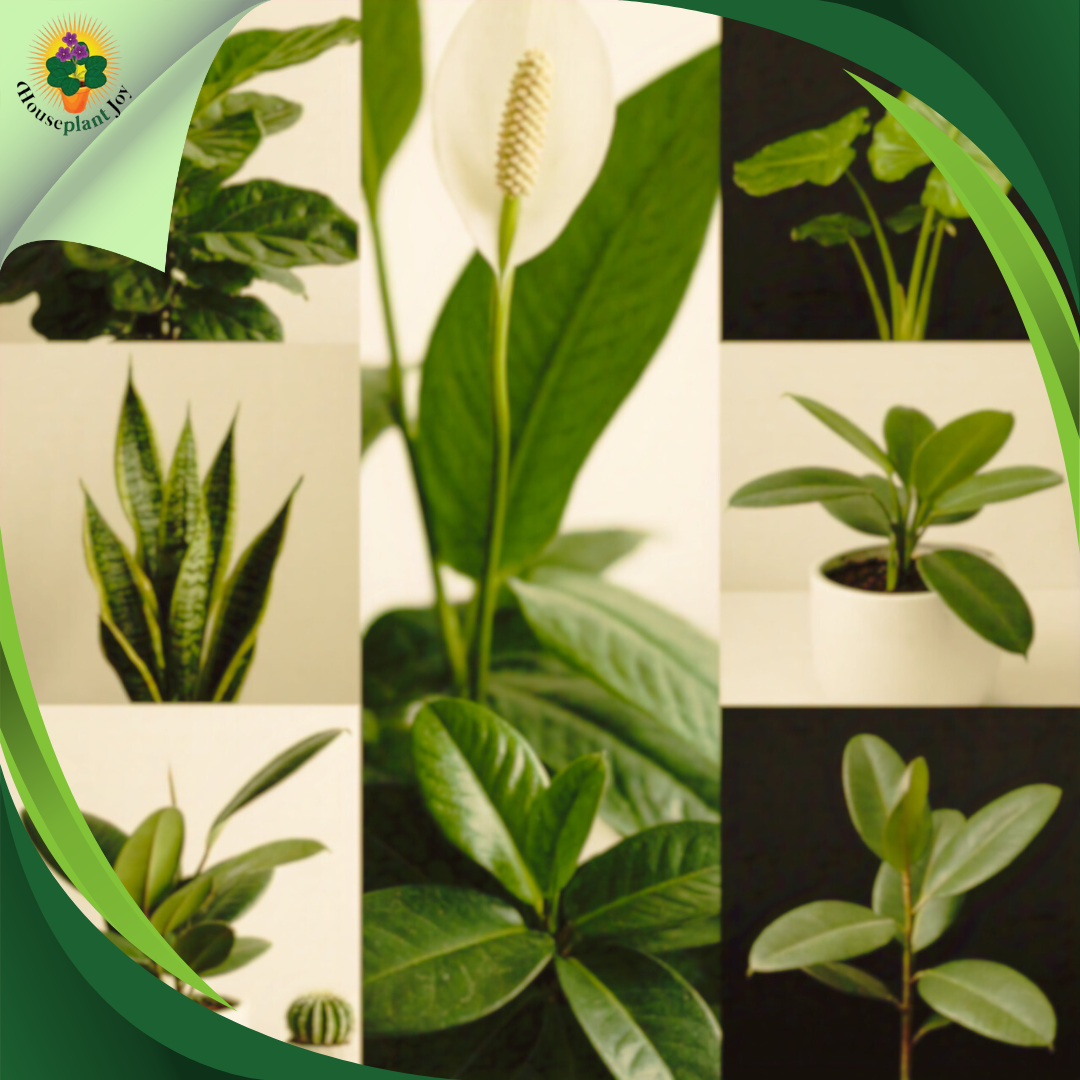HousePlantJoy is supported by our audience. When you purchase through one of our links, we may earn a small affiliate commission. As an Amazon Associate I earn from qualifying purchases. Your cost is not affected.
==================
The best houseplants for air quality do more than just brighten up your space; they actively improve the air you breathe. Certain varieties have been scientifically proven to reduce indoor air pollutants and boost oxygen levels, creating a healthier environment at home. From filtering toxins like formaldehyde and benzene to adding humidity to dry spaces, the right plants can transform your living space into a natural air purifier. Whether you’re sprucing up your home office or looking to create a fresh, serene bedroom, these houseplants are both functional and visually appealing.
But with so many options available, how do you choose the best plants for air quality? This guide narrows it down to the most effective air-purifying plants that are easy to care for and thrive indoors. You’ll discover how these green companions can not only enhance your health but also bring a sense of calm and natural beauty to your home. Get ready to breathe easier and enjoy the benefits of a greener, cleaner living space.
Air-Purifying Houseplants: Beautify Your Space and Breathe Cleaner Air
Plants can make your home look nice and help clean the air, too. Some houseplants are great at taking bad stuff out of the air we breathe. NASA found that certain indoor plants can reduce air pollutants, like formaldehyde.
People spend a lot of time inside. This makes having clean air in homes and offices really important. Plants can help with this in a natural way. They not only look pretty but also work hard to make the air better.
There are many types of plants that are considered the best houseplants for air quality, as they are particularly effective at cleaning the air. Some of these include peace lilies, rubber plants, and English ivy. Each plant has its own special way of helping to make the air cleaner and fresher.
Key Takeaways
- Houseplants like peace lilies, rubber plants, and snake plants help remove harmful toxins such as formaldehyde and benzene from indoor air, improving air quality.
- Having air-purifying plants in your home can lead to fewer headaches, better sleep, reduced allergies, and increased energy levels due to cleaner air and improved oxygen flow.
- Plants like ferns help add moisture to dry indoor air, easing breathing and creating a more comfortable environment, especially during winter months.
- Many air-purifying plants, such as spider plants and snake plants, are easy to care for and thrive in low-light conditions, making them perfect for homes and offices.
- If you have pets, opt for non-toxic plants like the spider plant or Boston fern, which provide air-purifying benefits without posing risks to your furry friends.
Importance of Air-Purifying Plants
Air-purifying plants play a key role in improving indoor air quality, making them some of the best houseplants for air quality. They remove harmful substances and increase oxygen levels in our homes and offices.
Health Benefits and Air Quality
Plants can remove toxins from the air we breathe. They take in carbon dioxide and give off oxygen. This helps us feel more alert and breathe easier. Some plants are very good at getting rid of formaldehyde and benzene. These chemicals can make people sick. Having plants around can lead to the following:
- Less headaches
- Better sleep
- Fewer allergies
- More energy
Plants also make rooms feel nicer. They add color and life to spaces. This can help people feel calmer and happier.
Relation to Indoor Air Pollution
Indoor air can be more polluted than outdoor air. This is because of things like:
- Cleaning products
- Paint
- Furniture
- Carpets
These items release volatile organic compounds (VOCs). VOCs are bad for our health. Plants can absorb these harmful substances. Some plants are great at cleaning the air. They can remove:
- Carbon monoxide
- Formaldehyde
- Benzene
Plants also trap dust on their leaves. This helps keep the air cleaner. Having plants in a room can make the air feel fresher and healthier to breathe.
Understanding Plant-Based Air Purification
Plants clean the air through natural processes, making them some of the best houseplants for air quality. They take in harmful chemicals and release fresh oxygen. This happens through two main ways: photosynthesis and phytoremediation.
Photosynthesis and Air Quality
Plants use photosynthesis to turn light into food. As part of this process, they take in carbon dioxide from the air. They then release oxygen as a byproduct. This helps freshen indoor air.
Many houseplants can remove carbon dioxide and other gases from the air. Some plants are better at this than others. For example, peace lilies and snake plants are known for cleaning the air well. Plants also add moisture to the air. This can help with dry indoor air. It may make breathing easier for some people.
Phytoremediation Process
Phytoremediation is how plants clean up toxins. They can remove chemicals like formaldehyde and benzene from the air. These chemicals often come from things like furniture and paint.
Plants absorb these toxins through their leaves and roots. They then break down the harmful substances. Some plants are very good at this. Spider plants and chrysanthemums are examples of plants that clean air well.
A famous NASA study looked at how plants clean air. It found that some plants can remove up to 87% of air toxins in 24 hours. This study helped people understand how useful plants can be for air quality.
Top Air-Purifying Plants and Their Properties
Many houseplants can improve indoor air quality by removing harmful toxins. The best houseplants for air quality are those that excel at targeting specific pollutants and creating a healthier environment.
The NASA Clean Air Study and Houseplants
NASA’s Clean Air Study found that certain plants are great at cleaning indoor air. The study tested plants’ ability to remove common toxins like benzene, formaldehyde, and trichloroethylene.
Top performers included the peace lily, snake plant, and spider plant. These plants can remove up to 87% of air toxins in 24 hours. The spider plant is easy to grow and removes formaldehyde and xylene.
The areca palm ranked as the most effective air-purifying plant overall. It’s great for larger spaces and adds a tropical touch to any room.
Plants that Remove Specific Air Toxins
Different plants target different pollutants. The peace lily is a champ at removing ammonia, benzene, formaldehyde, and trichloroethylene. It’s perfect for bathrooms or laundry rooms.
The rubber plant tackles formaldehyde, while the dracaena removes benzene. For those worried about VOCs, the Boston Fern is a great choice. It also helps increase humidity, which can ease breathing issues.
The philodendron heartleaf is a fast-growing option that thrives in low light. It’s especially good at removing formaldehyde from the air.
Check out this video on choosing the right plants for your home and the best 10 air-purifying indoor plants approved by NASA.
By: Eco Snooki
Care Tips for Your Air-Purifying Indoor Plants
Taking care of the best houseplants for air quality is easy and rewarding. With the right light and water, these plants will thrive and keep your air clean.
Light Requirements and Placement
Most air-purifying houseplants do well in bright, indirect light. Place them near windows but not in direct sunlight. Some plants, like the snake plant, can handle low-light conditions.
For best results, rotate plants every few weeks. This helps them grow evenly. If leaves start to yellow or droop, the plant may need more or less light. Some air-cleaning plants that like bright light:
- Spider plant
- Peace lily
- Bamboo palm
Low light tolerant plants:
- Snake plant
- Chinese evergreen
- ZZ plant
Watering and Maintenance Needs
Watering needs vary by plant type. As a rule, most indoor plants prefer their soil to dry out between waterings. To check if a plant needs water, stick a finger about an inch into the soil. If it feels dry, it’s time to water. Overwatering can lead to root rot, so be careful not to give too much.
Air-purifying plants are generally low-maintenance. They need occasional dusting of leaves to work best. Use a damp cloth to gently wipe leaves every few weeks.
Pruning helps keep plants healthy and shapely. Remove any dead or yellowing leaves as they appear. Some plants may need repotting every 1-2 years when they outgrow their containers.
Additional Benefits of Keeping Houseplants
Houseplants offer more than just cleaner air; they are some of the best houseplants for air quality, providing a natural way to purify the environment. They can boost your mood, make spaces look better, and even help you work better. Here’s a closer look at these extra perks.
Boosting Productivity and Mood
Indoor plants can make people happier and more productive. They help create a calm space that can lower stress. This is great for both homes and offices. Plants can make people feel more relaxed and focused.
Studies show that having plants around can help people concentrate better. This can lead to getting more work done. Plants also seem to spark creativity. They might help people come up with new ideas.
Green spaces indoors can lift spirits, too. People often feel more cheerful in rooms with plants. This good mood can last throughout the day. It’s like bringing a bit of nature’s positive energy inside.
Decorative Aspect and Living Spaces
Plants are natural decorations that can make any room look better. They add color, texture, and life to spaces. Different plants can create different moods. Some make rooms feel cozy, while others add a touch of elegance.
Plants can also divide spaces in open floor plans. Tall plants can act like natural walls. Hanging plants can draw the eye up, making rooms feel bigger. Small plants on shelves can add charm to bare spots.
Houseplants can improve humidity levels. This is good for the skin and can help prevent dry air in winter. Some plants, like ferns, are especially good at adding moisture to the air.
Plants can also make a space feel more welcoming. They create a lived-in look that can make guests feel at home. Plus, caring for plants can be a fun hobby that brings life to any room.
Choosing the Right Plants for Your Home
Picking the best houseplants for air quality depends on your home and lifestyle. Some plants are better at removing toxins than others. Your space and family needs also matter.
Pets and Plant Safety
Not all air-purifying plants are safe for pets. Snake plants and peace lilies can be toxic if eaten. If you have cats or dogs, try pet-friendly options like spider plants or Boston ferns. These plants clean the air and are safe for curious pets:
- Areca palm
- Bamboo palm
- Parlor palm
- Ponytail palm
Always check if a plant is pet-safe before buying. Keep plants out of reach of pets when possible.
Space Considerations and Plant Size
The size of your home affects which plants work best. Large plants like rubber trees need more room. Smaller spaces do well with compact choices. Good options for small areas:
- Pothos
- Chinese evergreen
- Spider plant
For bigger spaces, try:
- Fiddle leaf fig
- Monstera
- Bird of paradise
Place plants where they get enough light but don’t block walkways. Hanging plants can save floor space in tight spots.
Allergies and Plant Selection
Some plants can trigger allergies. Low-allergy air-purifying houseplants include:
- Snake plant
- Peace lily
- Dracaena
- English ivy
These plants don’t produce much pollen. They’re good for people with allergies or asthma. Avoid plants with fuzzy leaves if you have dust allergies. Keep plants free of dust and mold. This helps them clean the air better and reduces allergens.
Did You Know?
Watch this video about the unbelievable air purifier from bedroom plants that release oxygen.
By: GreenlandGarden
Breathe Easier with the Best Houseplants for Cleaner, Fresher Air
The best houseplants for air quality do more than just serve as decorative accents; they actively work to purify the air, improving overall health and well-being. By absorbing harmful toxins and releasing fresh oxygen, these plants help reduce indoor air pollution, creating a cleaner, more breathable environment. The plants highlighted in this guide, such as peace lilies, rubber plants, and snake plants, offer not only air-purifying benefits but also contribute to a more aesthetically pleasing and calming space. Whether you’re looking to enhance your home office, bedroom, or living room, incorporating these plants can transform your indoor environment.
Selecting the right air-purifying plants depends on factors such as your living space, lifestyle, and whether you have pets. With a variety of options available, there are safe, easy-to-care-for plants that can thrive in any home. From low-maintenance choices like the snake plant to more decorative options like the rubber plant and spider plant, these plants help maintain a healthier, fresher atmosphere. By choosing the best houseplants for air quality, you’ll be fostering both a cleaner environment and a more pleasant, green home.
Frequently Asked Questions
Many houseplants can improve indoor air quality. Some are easy to care for, while others need more attention. Certain plants work well in bedrooms or are safe for pets. Let’s look at the top choices for cleaner air at home.
What Are Some Low-maintenance Indoor Plants Known for Improving Air Quality?
Spider plants and snake plants are great low-maintenance options. They need little water and can thrive in different light conditions. Peace lilies also clean the air well and only need weekly watering.
Which Plants Are Included in NASA's List of Top Air Purifying Plants?
NASA’s list includes several effective air-cleaning plants. The spider plant, peace lily, and snake plant are on this list. It also features the bamboo palm and Boston fern as top air purifiers.
Are There Any Houseplants That Are Particularly Good for Purifying the Air in Bedrooms?
Some plants work especially well in bedrooms. Aloe vera releases oxygen at night, making it great for sleeping areas. Snake plants also give off oxygen at night. Lavender can help promote relaxation and better sleep.
How Do Indoor Plants Contribute to the Reduction of CO2 Levels Indoors?
Plants naturally absorb CO2 during photosynthesis. They take in carbon dioxide and release oxygen. This process helps lower indoor CO2 levels. Some plants, like the areca palm, are especially good at this.
What Are the Top Indoor Plants Recommended for Enhancing Overall Health Through Air Purification?
For overall health benefits, snake plants, spider plants, and peace lilies are top choices. The rubber plant and dracaena also clean the air well. These plants remove various pollutants from indoor air.
Why Become a Member of Our Community?
Unlock Exclusive Insights: Gain vital tips that will help your plants flourish and thrive like never before.
Assistance from Professionals: Connect with our knowledgeable team on social media platforms such as Facebook and Twitter. Our gardening experts are eager to support you on your plant journey.
Network with Fellow Plant Lovers: Join other plant aficionados, exchange your stories, and cultivate a nurturing community. Sign up today! Follow Houseplant Joy on Facebook, Instagram, and Twitter for daily motivation and to enhance your plant experience! #HouseplantJoy #GreenThumbsUnite #HouseplantLove


